
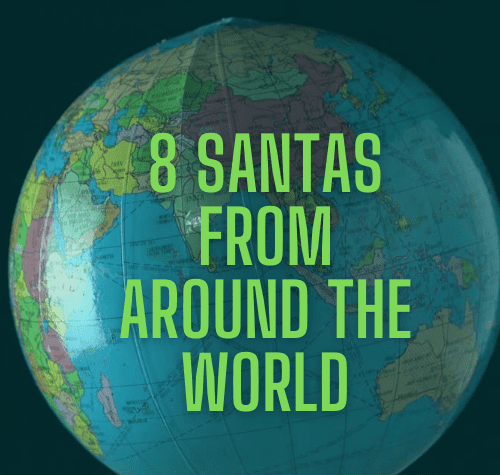
Santa Claus has become something of a cultural icon across the world, and he embodies the spirit of Christmas for so many of us. It’s always fascinating to look at the different interpretations of Santas around the world, and how he is influenced by culture and tradition. These are some of the different types of Santa around the world.
1. Nisse
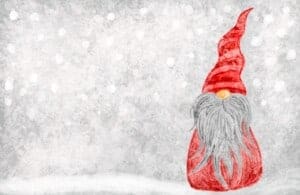
- Santa Name: Nisse
- Culture: Northern Europe
- Origin: Scandinavian folklore
- Description:
A Nisse is a Scandinavian legendary figure. Traditional folklore includes the Nisse as a knome that lives secretly in the house. The people they live with don’t actually see them. If the owners treat them well by doing things such as leaving out porridge for them then they would protect the children and animals from misfortune. If they weren’t treated well then mischief would occur such as breaking things and turning objects upside down.
In modern times, the Nisse is the equivalent of Santa Claus, and is usually described as resembling a tiny dwarf-like creature or gnome, generally no more than 3 feet in height. The nisse wears a cap and has a long white beard, and it is believed to appear during the winter solstice. So basically, it’s a garden gnome with a sackful of gifts! In recent times, with the commercialization of Christmas, the Nisse has gradually begun to resemble the traditional Santa Claus a lot more. Similar to the way, Americans leave out cookies for Santa Claus, some Norwegian families will leave out a bowl of porridge for the Nisse on Christmas Eve. You never want to upset a Nisse.
2. Yule Lads
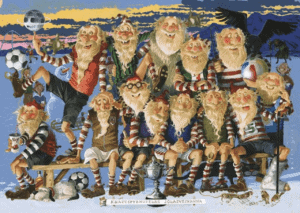
- Santa Name(s): Yule Lads
- Culture: Icelandic
- Origin: Icelandic folklore figures
- Description:
In Iceland, the Santa equivalent is Yule Lads, also known as Yulemen. Traditionally, on each of the 13 nights leading up to Christmas, one of the 13 trolls comes down from the mountains and will leave kids gifts or candy for the good kids that leave their shoe in the window. If the kid has been naughty then the Yule Lad will leave a potato.
It should be noted that each of the 13 Yule Lads have their own distinctive personality. To learn more about each lads distinctive personality, go to the article “Iceland’s 13 Lads” from Icelandic Mountain Guides.
3. Mikuláš
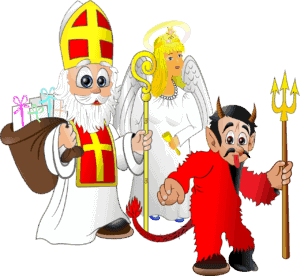
- Santa Name: Mikuláš
- Culture: Central Europe, many countries
- Origin: Hungarian folklore, celebrated as an historical figure similar to St. Nicolas
- Description:
Mikuláš is a prominent Santa in multiple countries, and is believed to visit homes every year on the eve of St. Nicholas Day. St. Nicolas Day is December 5th. He has two assistants. One represents an angel and the other represents the devil. The character that is representative of the devil is named Krampusz.
Depending upon the country, Mikuláš and his assistants will either visit peoples home or stroll the city on the eve of St. Nicholas Day. The angel rewards good children with gifts and candy, while the assistant, Krampusz, would hand out wooden spoons or coal to naughty kids. Mikuláš had the right idea, he is one of the only Santas from around the world that hired an assistant to do the dirty work! Other Santas should have been taking notes here. We wonder if Krampusz was on commission…
4. Befana
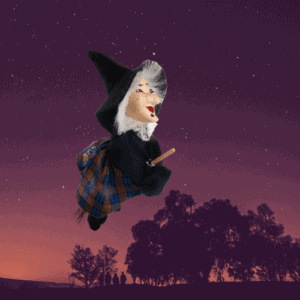
- Santa Name: Befana
- Culture: Italy
- Origin: Local folklore
- Description:
Traditionally Befana is an old woman who gives gifts to children every year on Epiphany Eve. She is believed to visit homes via broomstick, and climb down the chimney to leave gifts, and leave lumps of coal for children who have been bad. In modern Italy, Befana is depicted as, and referred to as, the Christmas Witch. We’ve not heard of many examples of a Santa from around the world resembling a witch, so this is definitely a first. Let’s just hope Befana doesn’t visit any kids called Hansel and Gretal this Christmas shall we?!
5. Ded Moroz
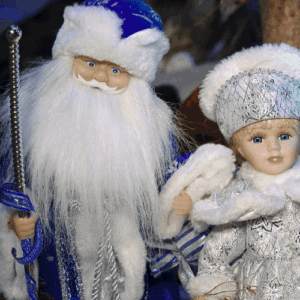
- Santa Name: Ded Moroz
- Culture: Russian
- Origin: Russian, Ukrainian and Eastern Block folklore
- Description:
With the most Russian sounding name ever, Ded Moroz is loosely translated as ‘Old Man Frost,’ “ Grandfather Frost” or “Father Frost.” and is the Russian equivalent of Santa. He is depicted as being an old man with a long white beard and a fur coat and hat, and he carries a magical staff. The color of the coat may be red or blue. But a lot of times, it is blue. Anyway, D-Moz (as his buddies probably called him) is said to visit kids on New Year’s Eve with his granddaughter, Snegurochka, and hand out gifts.
6. Joulupukki
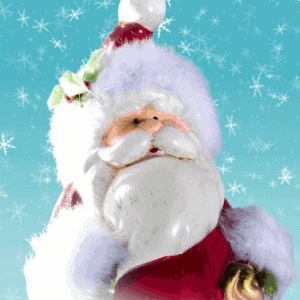
- Santa Name: Joulupukki
- Culture: Finnish
- Origin: Based on a mythical Norse character from Ancient Scandinavia
- Description
Joulupukki is also popular in Norway and other parts of Scandinavia, and is known as ‘Yule Goat.’ He is believed to be an old man in a red fur coat, who travels on a sleigh pulled by reindeer, and visits children in order to leave gifts. Does this sound familiar? If so, that is because it is believed that the American Santa Claus is derived from the Finnish Santa Claus.
Although they are very similar, there is a difference between the Santas. In the American version, Santa sneaks into the house through the chimney after the kids are asleep. Instead, the Yule Goat of Christmas is not as sneaky. Joulupukki knocks on the doors of the houses and delivers presents to the “nice” kids that are awake.
Every now and again, it has been mentioned that this Santa from around the world also wears red leather pants. Now, we’re not sure about the red leather trousers. But quite frankly, to be honest, this sounds like a massive fashion faux pas. Although, to be fair, leather is warm, so what do we know?
7. Father Christmas
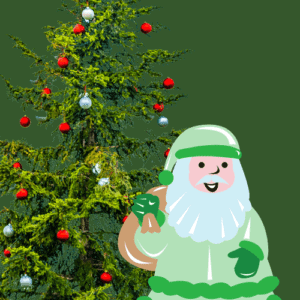
- Santa Name: Father Christmas
- Culture: United Kingdom
- Origin: United Kingdom
- Description:
Okay, so Father Christmas and Santa Claus are really similar. At this point in time, Father Christmas is considered the British equivalent of Santa Claus. Father Christmas was originally a party goer. As the UK started to adopt Christmas culture from the US, he became more family friendly and a bearer of gifts.
A distinction between Father Christmas and Santa Claus is the color of their robe. Father Christmas is little more flexible in the color of his robes. Historically, he actually wore tan or sometimes green rather than red. Now, there is a common misconception that Santa/Father Christmas had their green suits changed to red because of Coca Cola! However, this is not true, and there were depictions of Father Christmas wearing red back in the early drawings of Thomas Nast, who originally depicted the jolly old man in print. Yes, the Coca Cola image, which is the one we most commonly associate with Santa popularized the red suit, but in English tradition, green is perfectly acceptable, and often a common variant for Father Christmas.
8. Santa Claus

- Santa Name: Santa Claus
- Culture: Western – United States
- Origin: Derived from the Dutch legend of Sinterklass, Santa didn’t arrive in the USA until around the 17th Century via settlers.
- Description:
Although Santa Claus has some origins from different cultures such as the Finnish culture and it has origins as far back as the 17th century, the modern image we recognize today was popularized by Coca-Cola. In the 1930s, Coca-Cola use the Santa figure in their ads in his popularity grew exponentially.
The modern Santa Claus we know today is a fat, jolly man, clad all in red, with a long white beard, black boots, and a sleigh pulled by reindeer. He delivers present through the chimneys of houses. This is one of the most famous depictions of Santa, and one that continues to endure in film and television. The commercialization of Christmas has certainly made this the dominant and accepted depiction of Saint Nic up and down the world, but it is by no means the only one, and there are a lot of different variants on this figure to consider.










